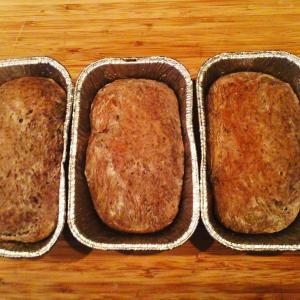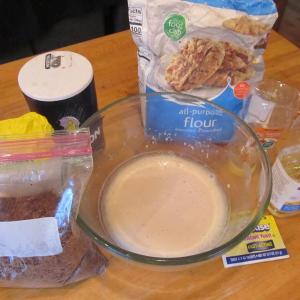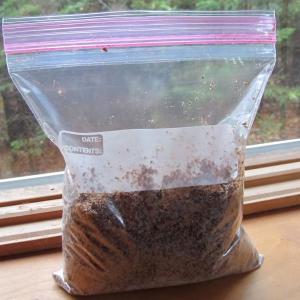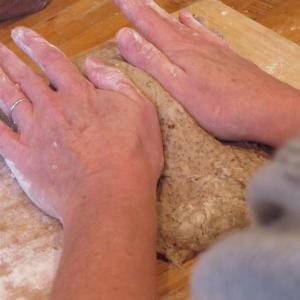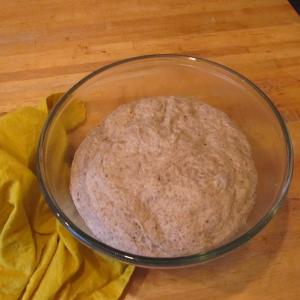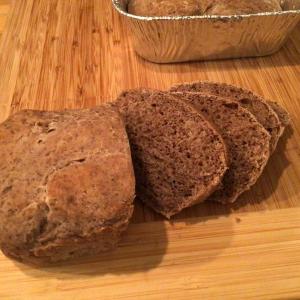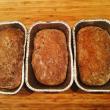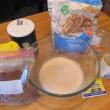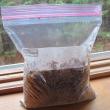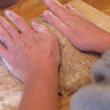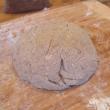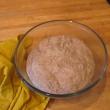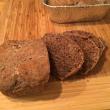Here’s the acorn bread nobody asked for
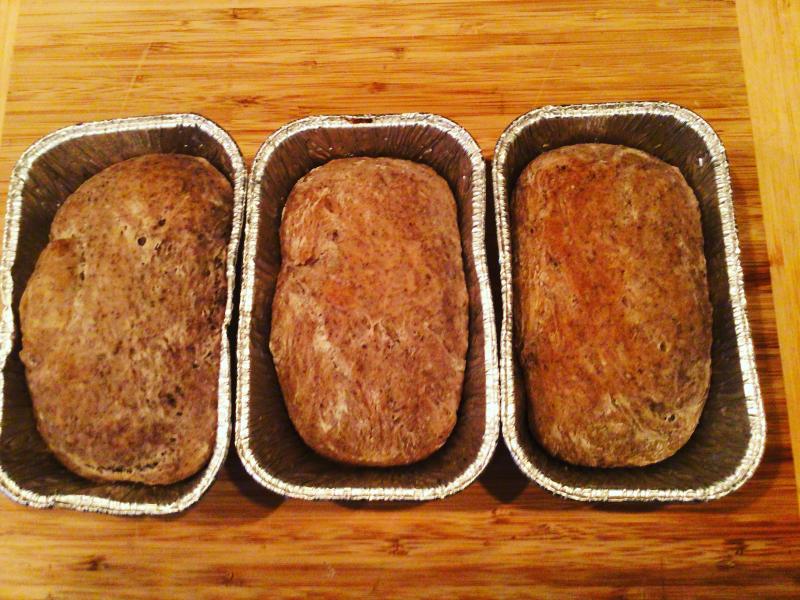 Mini loaves of acorn bread. Photo by Kay Stephens
Mini loaves of acorn bread. Photo by Kay Stephens
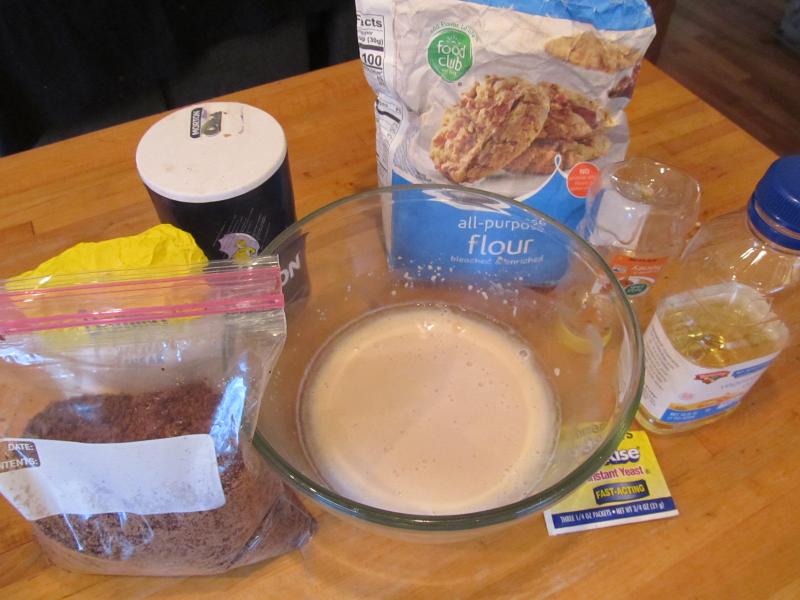 First, get all of your ingredients together.
First, get all of your ingredients together.
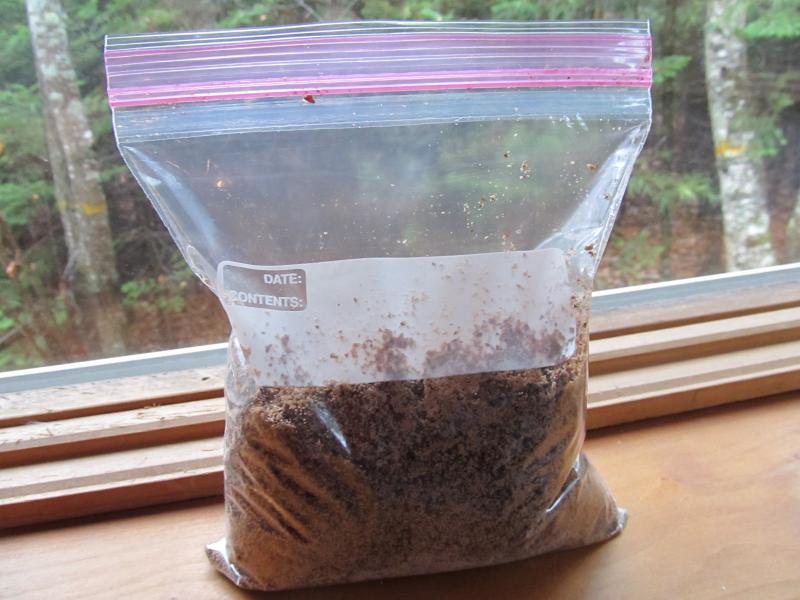 A gallon and a half of raw acorns produced roughly two and a half cups of acorn flour. One half cup was used before this photo was taken. Photo by Kay Stephens
A gallon and a half of raw acorns produced roughly two and a half cups of acorn flour. One half cup was used before this photo was taken. Photo by Kay Stephens
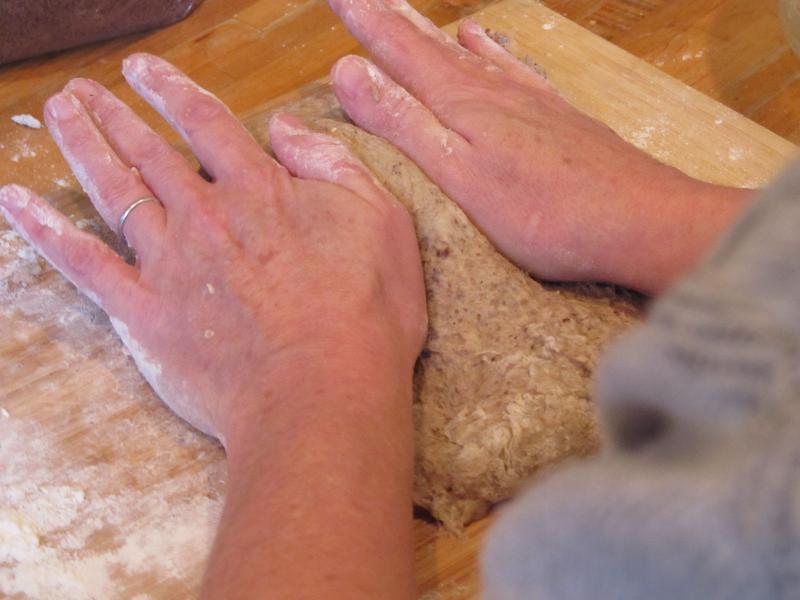 Knead the bread on a floured surface. Photo by Kay Stephens
Knead the bread on a floured surface. Photo by Kay Stephens
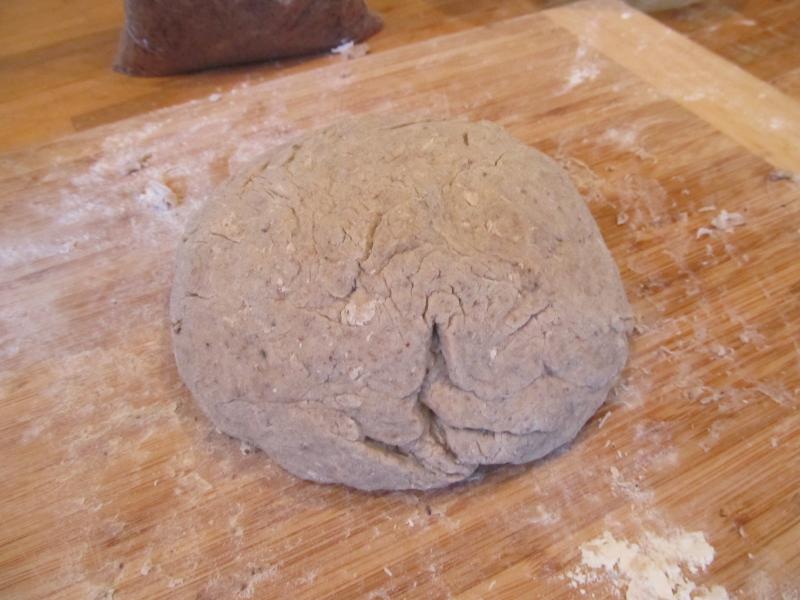 A fully formed acorn bread loaf. Photo by Kay Stephens
A fully formed acorn bread loaf. Photo by Kay Stephens
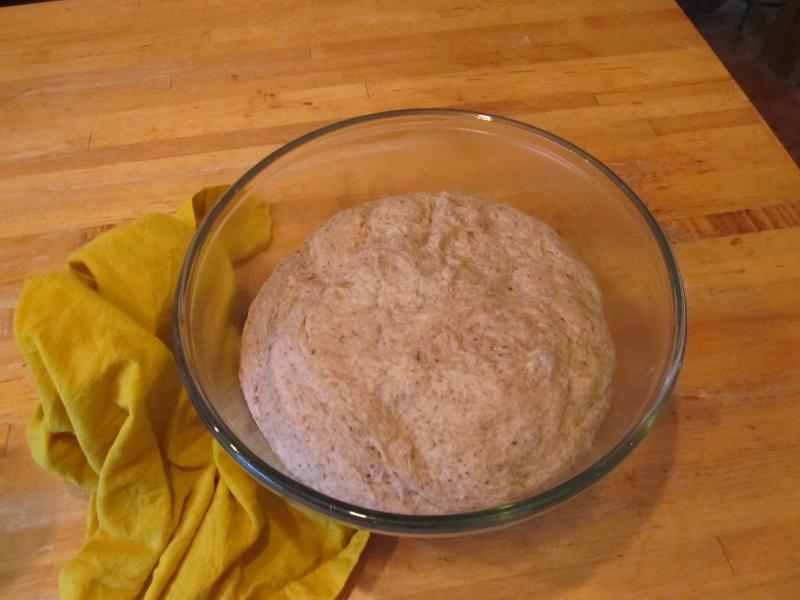 After letting it rise for 90 minutes. Photo by Kay Stephens
After letting it rise for 90 minutes. Photo by Kay Stephens
 A mini loaf warm out of the over. Photo by Kay Stephens
A mini loaf warm out of the over. Photo by Kay Stephens
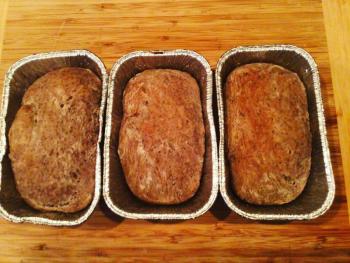 Mini loaves of acorn bread. Photo by Kay Stephens
Mini loaves of acorn bread. Photo by Kay Stephens
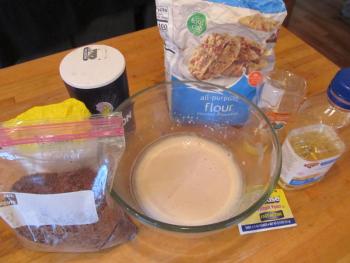 First, get all of your ingredients together.
First, get all of your ingredients together.
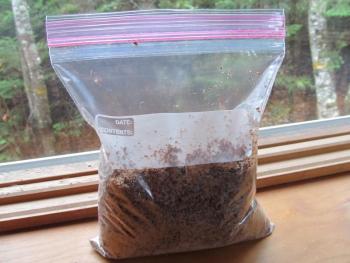 A gallon and a half of raw acorns produced roughly two and a half cups of acorn flour. One half cup was used before this photo was taken. Photo by Kay Stephens
A gallon and a half of raw acorns produced roughly two and a half cups of acorn flour. One half cup was used before this photo was taken. Photo by Kay Stephens
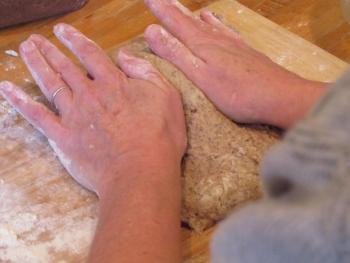 Knead the bread on a floured surface. Photo by Kay Stephens
Knead the bread on a floured surface. Photo by Kay Stephens
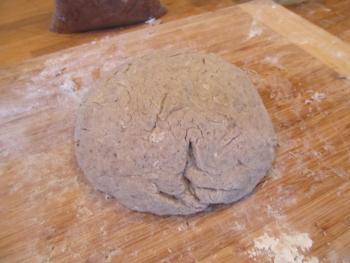 A fully formed acorn bread loaf. Photo by Kay Stephens
A fully formed acorn bread loaf. Photo by Kay Stephens
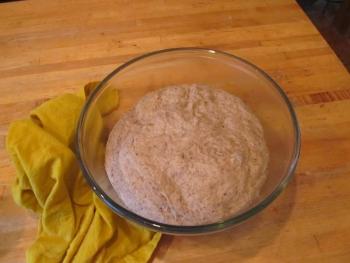 After letting it rise for 90 minutes. Photo by Kay Stephens
After letting it rise for 90 minutes. Photo by Kay Stephens
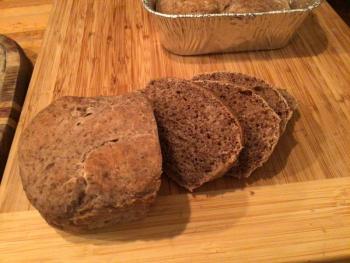 A mini loaf warm out of the over. Photo by Kay Stephens
A mini loaf warm out of the over. Photo by Kay Stephens
On Thanksgiving day, I decided to roll up my sleeves and attempt to bake some bread. Not just any bread. Loaves made from those damn acorns it took me one hour of gathering, two weeks of cracking, five hours of leaching, and 28 hours of dehydrating, as explained in my recent article, “Back off squirrel, these acorns are mine.”
Basically, a gallon and a half of raw acorns produced probably two and a half cups of acorn flour. Worth it? You tell me.
Actually, don’t tell me. My friends have already told me they thought that was a futile experiment.
But, my reasoning for going to those lengths was because we’re still in the midst of a pandemic. Remember back in March when the grocery shelves were empty because of panic shopping? Here was my story on that: “Alternatives to panic shopping/hoarding while we get through this.”
We may get another round of panic shopping again in the coming weeks as the COVID-19 virus tears through the United States. That disruption, that discomfort of not being able to find certain food or supplies, was a significant reminder to anyone in a first world country not used to supply chain chaos or the awful feeling of scarcity. So many people in the U.S., especially here in the Midcoast, are panicking because they don’t have enough money for rent or food for their children or pets.
To quiet the mind, I gathered food that was right outside my door, literally. I took all of that time to learn how how to make something with a main ingredient I didn’t have to buy.
So, we’ll get right to it: How to make acorn bread.
Gather your ingredients
- Water (1 cup)
- White Flour (2 1/2 to 3 cups)
- Acorn Flour (1/2 cup)
- Active Yeast (1 packet)
- Oil (2 Tbsp. of Vegetable, Olive or Canola)
- Sugar (1/3 cup)
- Honey (2 tsp.)
- Salt (1 tsp)
You’ll need white flour because the acorn flour is essentially ground nuts and doesn’t have gluten needed as a leavening agent. But, it also stretches the recipe, so you only need about 1/2 cup of it.
Get The Yeast Going
Heat up a cup of water to about 105-115 F, or if you’re like me and have no idea of how to measure how hot a cup of water can get, microwave it for about 45 seconds and hope for the best. In a large mixing bowl, add in a packet of yeast with a half tsp. of sugar with the water and stir it gently. Then, wait for about five or 10 minutes until it gets foamy. Best to wait to go to the grocery store if you’re making this bread to see if that yeast takes. Otherwise, you’re going to have to go back to the store and get a new packet of yeast. Ask me how I know.
Form Acorn Bread Dough
Once the yeast is going, add in the sugar. then fold in the oil, honey, and half of the white flour. Then, be like David Rose from Schitt’s Creek and repeatedly question how to “fold” an ingredient in. With a plastic or wooden spoon, mix all together, and add in the acorn flour. At this point, the bread takes on a cool, earthy color. Remove from the bowl and on a floured surface, begin kneading the dough for about five to seven minutes until the dough ball is no longer sticky. Once the dough is formed, place in a clean bowl with a damp warm cloth covering it and allow the dough to rise for about 90 minutes. Then, punch it down and reform into another loaf. You can either use a sprayed or buttered standard 9 x 5 bread pan for one loaf, but I chose to form three mini loaves. Cover the loaf pan with a warm, damp towel and allow it to rise for another hour.
Bake it off
Heat the oven to 350 degrees and stick the loaf on the top rack. Make sure you check it at 25 minutes to make sure it’s not browning too much (cover with aluminum foil if so) and allow the loaf to fully cook for the entire 35 minutes. Your kitchen will have a nice, yeasty, nutty aroma.
Give the bread to your friends
Acorn bread was served for Thanksgiving dinner in lieu of rolls. I’m astounded I didn’t screw it up, because the bread came out with a spongey, pleasing texture and a nutty, honeyed taste that was fantastic with a pat of butter. I gave away the other two mini loaves to the friends who wondered why I went to all of this trouble and asked for their honest opinion.
The consensus? It turned out to be very good.
Kay Stephens can be reached at news@penbaypilot.com
Event Date
Address
United States

